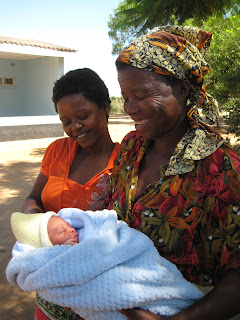Another visiting faculty member from Africa University and I are leaving tomorrow morning to make my second try at getting to Victoria Falls. Traveling isn’t easy here, however. Here’s the story of my trip so far (and remember, I haven’t even left yet)!
There's a bus from Mutare to Bulawayo. It leaves sometime very early in the AM, but there's no good way to find out when. It leaves from a bus "depot", which is really just a parking lot with bus-size spaces, in the very worst part of Mutare, several miles from where I live. There's no way to get a taxi short of walking to the center of town, and there's no good way to reserve a taxi, even by walking down there and asking someone. It's not safe to walk at night--I'm of the opinion that the greatest danger is breaking a leg in one of the many potholes and the very uneven pavement that seems to be the norm, because although there are street lights, no one can remember when they last worked. It's pitch black out and there's enough of a cloud cover that there won't be a moon tonight. So a foster son of a Health Sciences faculty member will drive us to the bus depot at 3:30 am, stay with us, and make sure we get on the correct bus.
Once we're on that bus, our best bet is to try to make friends with people from Bulawayo who might be able to tell us where and when we catch a bus from Bulawayo to Vic Falls. We're assured there is one, but that's as much as we know. Oh, did I mention that no one knows how much either of these buses will cost? We think the first one might be $20 or $25, and I'm guessing the second one won't be much more.
Assuming that we get on the bus to Vic Falls, our next task is (again) to make friends with anyone from Vic Falls to try to get a commitment for someone to drive us (probably for a fee, of course) from wherever the bus lets us off to the backpackers' lodging where we're staying. I'm told that bus depots are usually on the far edge of towns, and that there will be no taxis anywhere around when we get there because most of the people riding the bus wouldn't be able to afford one, so none meet the out-of-town buses. And, you guessed it, there's no way to phone for one.
The backpackers' lodging I chose came recommended by a friend of a friend. Unlike most such facilities, this one has a room (not a dormitory) with 2 twin beds and a private bath. All the others I looked at had a public bathroom down the hall. I booked the room through the internet at a site that specializes in such accommodation. Like Priceline and other such sites, they have you contact the accommodation directly with any questions or to change arrangements. I emailed the backpackers' place because I needed to check on something, but it's been 4 days now without a reply, so if they actually have email, either it doesn't work or they don't check it. The internet site gave 2 phone numbers for them. The first doesn't accept incoming calls, and the second is out of service.
My temporary employment permit (TEP) runs out Saturday, which is a huge issue. AU has had my passport for over a week trying to get an extension, and in the last three days I've walked across campus (because neither the email system nor the phones are working) 4 times to get it back so I'd have it for this trip. I'm told that I'll need to walk across the bridge, go through immigration and customs there, and probably spend a night out of Zimbabwe so that I can recross the border, buy a tourist visa, and thereby extend my stay 30 days. The university will try again to get an extension on my TEP once I get back. Failing that, I'll have to go out of the country again mid-April. I haven't had time to look at lodging in Zambia, since the internet hasn't been working well either at the university or on my dongel until just before I started this email. That's next on my list of things to do this evening.
So wish me luck. I'll let all of you know when I get back, and whether I made it to Vic Falls this try.





































